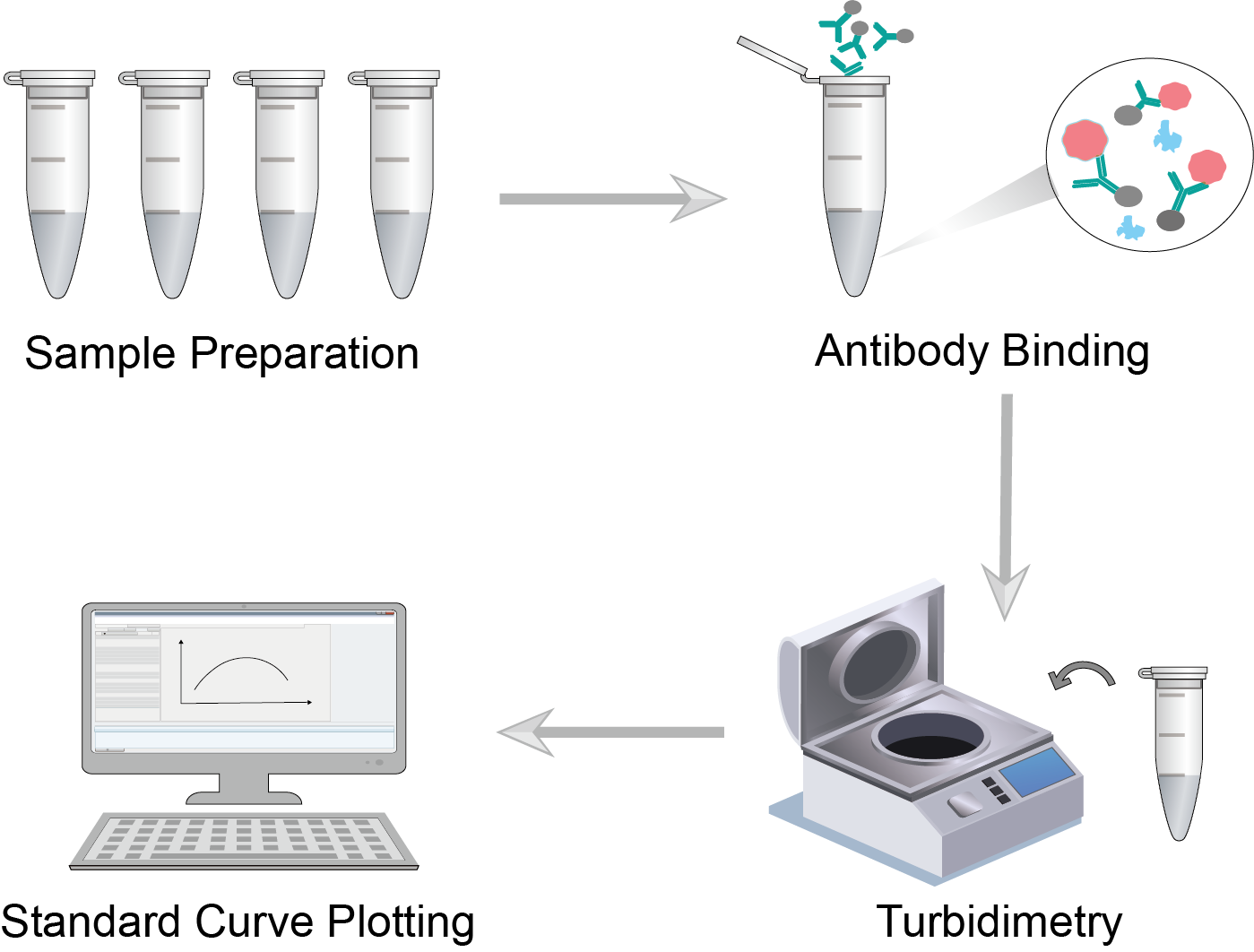Turbidimetry Protocol & Troubleshooting
Turbidimetry is an analytical technique. It is a light scattering measurement method that measures the intensity of light to determine the concentration of a suspended substance. Turbidimetry can be used in biology to determine the number of cells in a solution and the concentration of antigen in the solution.
Creative Biolabs provides scientists and experimenters with first-class laboratory reagents, technologies, and services for turbidimetry. Here below, you will find professional, scientific test protocols and troubleshooting guides for your reference.
Solutions and Reagents
| Stages | Solutions and Reagents |
| Sample Preparation | Distilled water, antigen standards, particle-bound antibodies, and reaction buffer |
Turbidimetry Procedure
Turbidimetry is a highly sensitive assay that gives results in a short period of time. The method is commonly used to quantify antigen-antibody complexes. The formation of antigen-antibody complexes increases the turbidity of the sample, which is measured by observing the transmission level of visible light.
 Figure 1: Turbidimetry Procedure.
Figure 1: Turbidimetry Procedure.
Prepare multiple test tubes with distilled water, serial dilutions of antigen standards, and samples to be tested. Set them up as a blank group, a control group, and a sample group. Then add an equal amount of specific antibody reagent to each tube, mix well, and incubate.
In the turbidimetric assay, the particle-bound antibody forms turbidity with the sample in an appropriate buffer. After that, use a light source to analyze the mixture. The level of transmitted light reflects the amount of antigen in the solution. If no antigen is present, little or no light is absorbed. As the concentration of antigen increases, the light transmission decreases accordingly.
Read the absorbance of the standard set of samples at the set wavelength. Plot the standard curve between sample concentration and absorbance. Finally, read the absorbance of each sample tube to be measured and substitute into the standard curve for antigen concentration calculation.
Troubleshooting
We describe proper measurement methods and related troubleshooting tips that are expected to help you collect the best possible test data.
Too high/low detection values
- Sample vial causes. Clean sample vials are critical. Any dirt, dust, or fingerprints on the sample bottle you are using can alter the measurement results. Therefore, you need to take care to remove any stains and contaminants using a lint-free cloth before placing the vial into the measuring instrument. As well as replacing scratched or stained cuvettes to avoid them leading to erroneous high results.
- Calibration causes. Calibration is always critical to accuracy. You need to make sure that you calibrate before each sample measurement.
- Light source causes. Choose the appropriate light source for your sample.
Unstable readings
- Sample causes. Readings may be erratic if the sample undergoes excessive physical changes while the instrument is scanning it. Sample precipitation and settling can cause this in highly turbid solutions. We recommend the use of fresh samples and controlled reaction times with antibodies.
- Air bubble causes. Even tiny air bubbles and submicron particles can cause this. To obtain the most accurate and stable readings possible, check the status of the sample and eliminate the presence of air bubbles before the assay.
Negative results
- Instrument causes. If the sample reading is lower than the blank reading, a negative result will be displayed. This indicates that the sample turbidity is at or near the detection limit of the meter. You can adjust or replace the instrument with a wider limit to perform the test.
- Calibration causes. Negative readings also indicate a problem when the instrument's hidden problem is eliminated. It may be that the sample reading is outside the detection limits because the calibration range was not selected properly. You can reselect the standard concentration for calibration.
For more information on turbidimetry, please visit our related products and services, or contact our technical team by email.
For research use only. Not intended for any clinical use.
This site is protected by reCAPTCHA and the Google Privacy Policy and Terms of Service apply.



